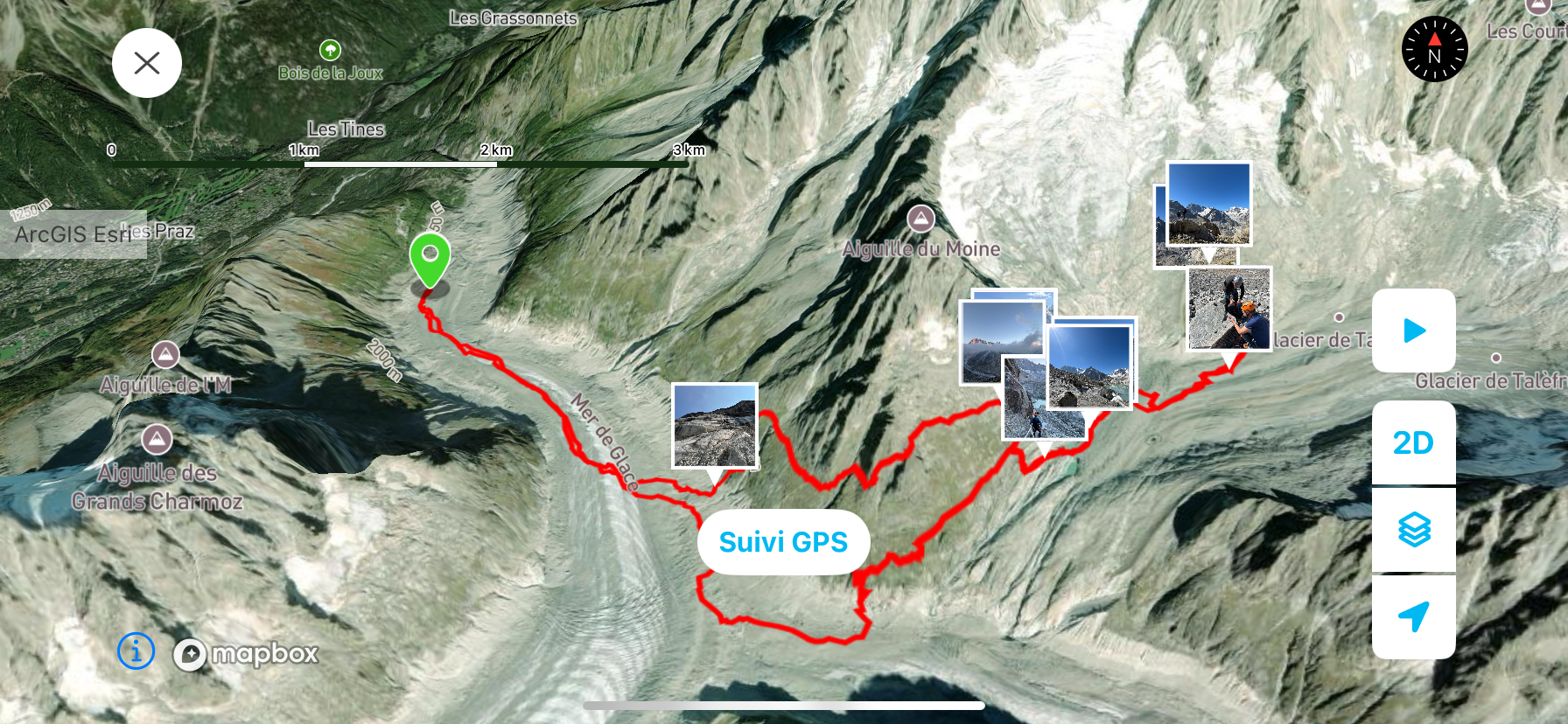First Stone Laid for the Vallot Observatory: A Third Place for Alpine Ecology in the Making in Chamonix
On Wednesday, September 18, the ceremony for laying the first stone of the renovation and expansion project of the Vallot Observatory in Chamonix Mont-Blanc took place. This was a significant event for CREA Mont-Blanc (the Center for Research on Mountain Ecosystems, an organization specializing in the study of mountainous environments) that hopes to transform this iconic site into a third place for alpine ecology in Chamonix. Whympr, as a patron of CREA through the 1% for the Planet association, is proud to share more about this wonderful project.
The Vallot Observatory: An Iconic Scientific Site in the Chamonix Mont-Blanc Valley
Built in the 1880s by Joseph Vallot, one of the founding fathers of science in the Mont-Blanc massif, the Vallot Observatory was bequeathed to the State and later purchased by the municipality of Chamonix in 2015. Today, it is made available to the Center for Research on Mountain Ecosystems (CREA Mont-Blanc) through a 25-year emphyteutic lease for its scientific research activities on biodiversity evolution in the Mont-Blanc massif.
While for many, the name Joseph Vallot evokes the well-known mountain refuge cherished by climbers, for others, including CREA Mont-Blanc, he symbolizes an unwavering commitment to science and mountain exploration. Vallot's pioneering work has indeed made Chamonix a center of scientific innovation, where the mountain environment becomes a field of study, an experimental space for learning and discovery.

CREA Mont-Blanc: The Heir of Vallot's Visionary Spirit
Nearly 28 years ago, CREA Mont-Blanc aimed to continue directly in the spirit of this visionary approach. Addressing issues of biodiversity and climate change, CREA Mont-Blanc generates knowledge in alpine ecology, using rigorous scientific methods and protocols while raising awareness among diverse audiences. Researchers prioritize field observations, long-term monitoring, and study the massif at all elevations, repeating the same protocols at different altitudes to better understand the evolution of its fauna and flora.
Just like Joseph Vallot, they combine naturalistic tradition with the use of the most modern technologies and instruments: satellites, camera traps, and artificial intelligence. Like Vallot, the researchers at CREA Mont-Blanc advocate for a vision of “third science” that is open, integrated, and interdisciplinary, capable of engaging with academic laboratories while exploring new paths for scientific knowledge production.
By involving citizens, mountain professionals, and decision-makers in their scientific production through a participatory science approach, CREA Mont-Blanc aims to bridge the gap between science and society, allowing everyone to understand the evolution of living organisms and fostering ongoing dialogue between researchers, local stakeholders, residents, and visitors.

Project for the Observatory: A Scientific Heritage for the Greater Good
The project for the Observatory was born from CREA Mont-Blanc's desire to once again make the Vallot Observatory a welcoming place for diverse audiences and transdisciplinary encounters surrounding societal issues such as biodiversity changes in the context of climate change. Thanks to the work of Atelier 17c Architects, this third place for alpine ecology is taking shape. A new 90 m² eco-designed laboratory (geothermal energy, bio-sourced materials, reuse, etc.) will be built to host the development of research activities conducted by CREA Mont-Blanc's teams and their scientific partners.
The Vallot chalet will be rehabilitated into a facility capable of hosting the public, providing a large workspace for meetings, training sessions, conferences, seminars, and workshops. Finally, a pedagogical and scientific garden will be created, where the public can independently or guided become familiar with the participatory science devices of CREA Mont-Blanc before heading out to explore and collect data that will be utilized by the research teams.
Construction and renovation works, which started in March 2024, are expected to last one year. The development of the pedagogical and scientific garden will begin in the summer of 2025. Thus transformed, the new Observatory will become a space for sharing knowledge, discoveries, and ideas, accessible to all—decision-makers, businesses, citizens, researchers, students, mountain professionals, and curious individuals eager to engage with specialists on the issues of mountain ecosystems in the context of climate change and the role of science in ecological transformation, during conferences, seminars, or self-guided visits.

A Project with Multiple Support
The total cost of the Observatory project amounts to €1.2 million (including €950,000 for the construction of the laboratory, the renovation of the Vallot chalet, infrastructure, and external developments—excluding the garden). The laboratory has received significant support from the Haute-Savoie Departmental Council, the first public funder, contributing €310,000 (including €250,000 for the works under its Sensitive Natural Spaces policy, plus €60,000 awarded as part of the partnership established with CREA Mont-Blanc between 2022 and 2025 for preliminary studies, the design of the pedagogical and scientific garden, and the renovation of the Vallot chalet into a facility that can host the public).
The project has also mobilized various other supporters, such as the Heritage Foundation through the Heritage in Danger mission led by Stéphane Bern (€225,000), the Fondation de France (€200,000), Europe through the TourScience Plus project, financed by the European FEDER-Alcotra funds during the 2014-2020 programming (€50,000), the Lemarchand Foundation (€60,000), the Placoplatre Foundation (€10,000), and other private support (€50,000). It is also subject to a citizen crowdfunding campaign launched last August with the support of the Heritage Foundation, which has already raised €30,000. This diversity of funders reflects the unifying nature of the project and its aim to connect around knowledge and the future of mountain environments.
While almost 80% of the funding has been mobilized, a fundraising campaign is still ongoing to secure the remaining funding by the end of the construction works (approximately €250,000).
The transformation of the Vallot Observatory into a third place for alpine ecology embodies an ambitious project that combines scientific heritage with environmental innovation, offering researchers, citizens, and local actors a space for exchange and discovery at the heart of climate and ecological challenges. At Whympr and Iphigénie, we are proud to be patrons of CREA through 1% for the Planet.
To learn more, visit the CREA website here and the Observatory page here.



.png)









